Roll container wheels: how and where to install castors?
In the world of transport and logistics, roll containers and trolleys play an important role in moving goods efficiently and quickly. A crucial part of these roll cages are the wheels, which provide mobility and manoeuvrability. To use a roll container ergonomically, it is important to know the different types of wheels. This way, the most suitable wheel can be chosen. This blog looks at the most commonly used wheels and the different ways to attach the wheels.
Casters vs Fixed Castors: What Are the Differences?
Swivel castors (with and without brakes) and fixed castors are both transport wheels and form the backbone of roll containers, but what distinguishes them from each other? The answer lies in their range of motion and agility. For example, casters can rotate 360 degrees around their axis. Fixed castors, on the other hand, can only roll straight forward or backwards. So which wheels you place under a roll container, and in what configuration, is crucial. This determines how the roll container will be able to move and manoeuvre. The tables below provide an overview of the most commonly used setups and for which applications they are used. These are recommendations only. You can decide for yourself how and in what arrangement you want to attach your wheels to a roller floor.
| 2 swivel castors / 2 fixed castors | 4 swivel castors | 2 fixed castors / 4 swivel castors |
 |
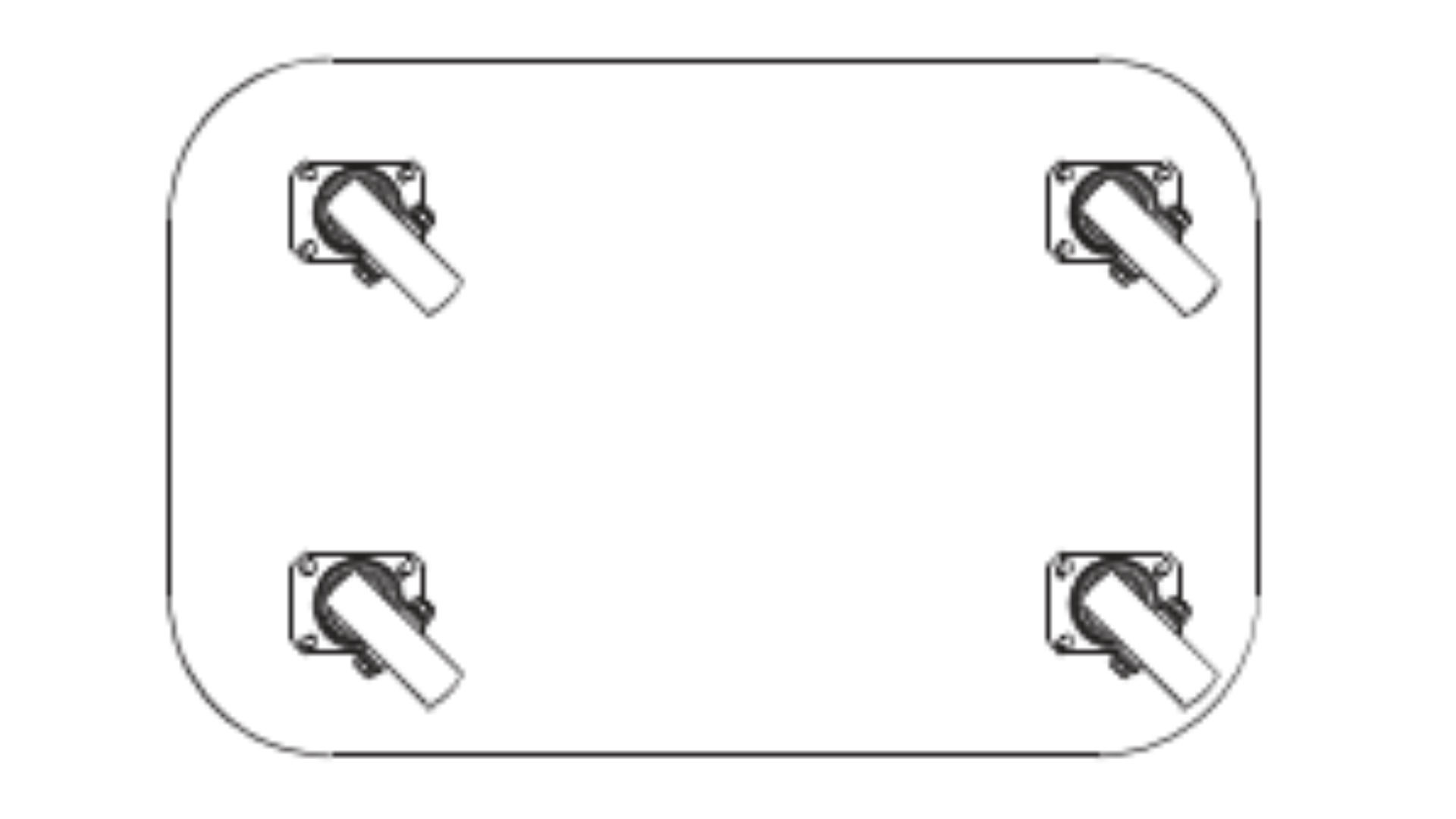 |
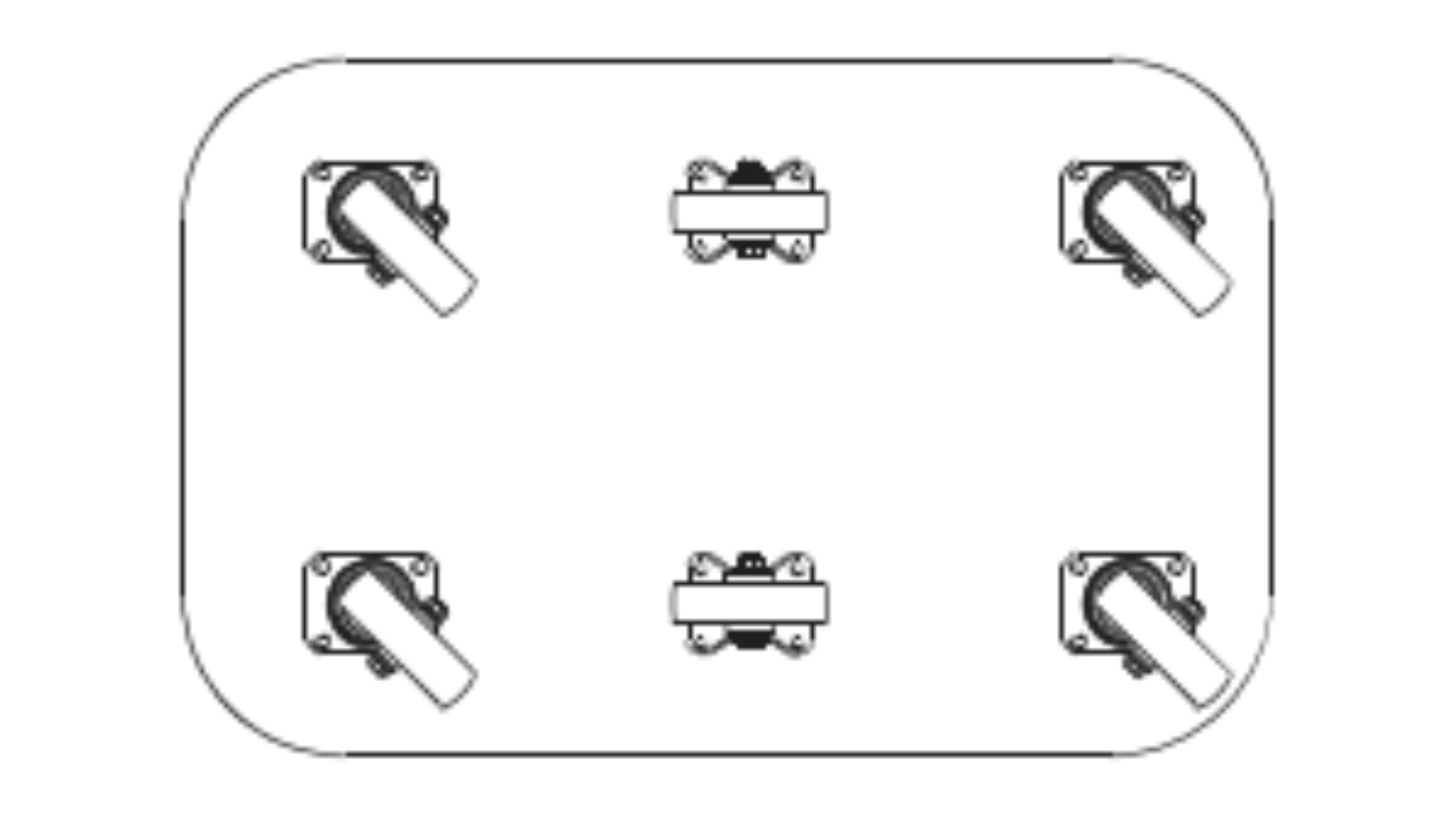 |
| For precise use over long and varied distances. | For easy use on flat surfaces and short distances. | For stable movement with heavy loads over a long distance. |
| 2 swivel castors / 2 fixed castors | 4 fixed castors | 3 castors |
 |
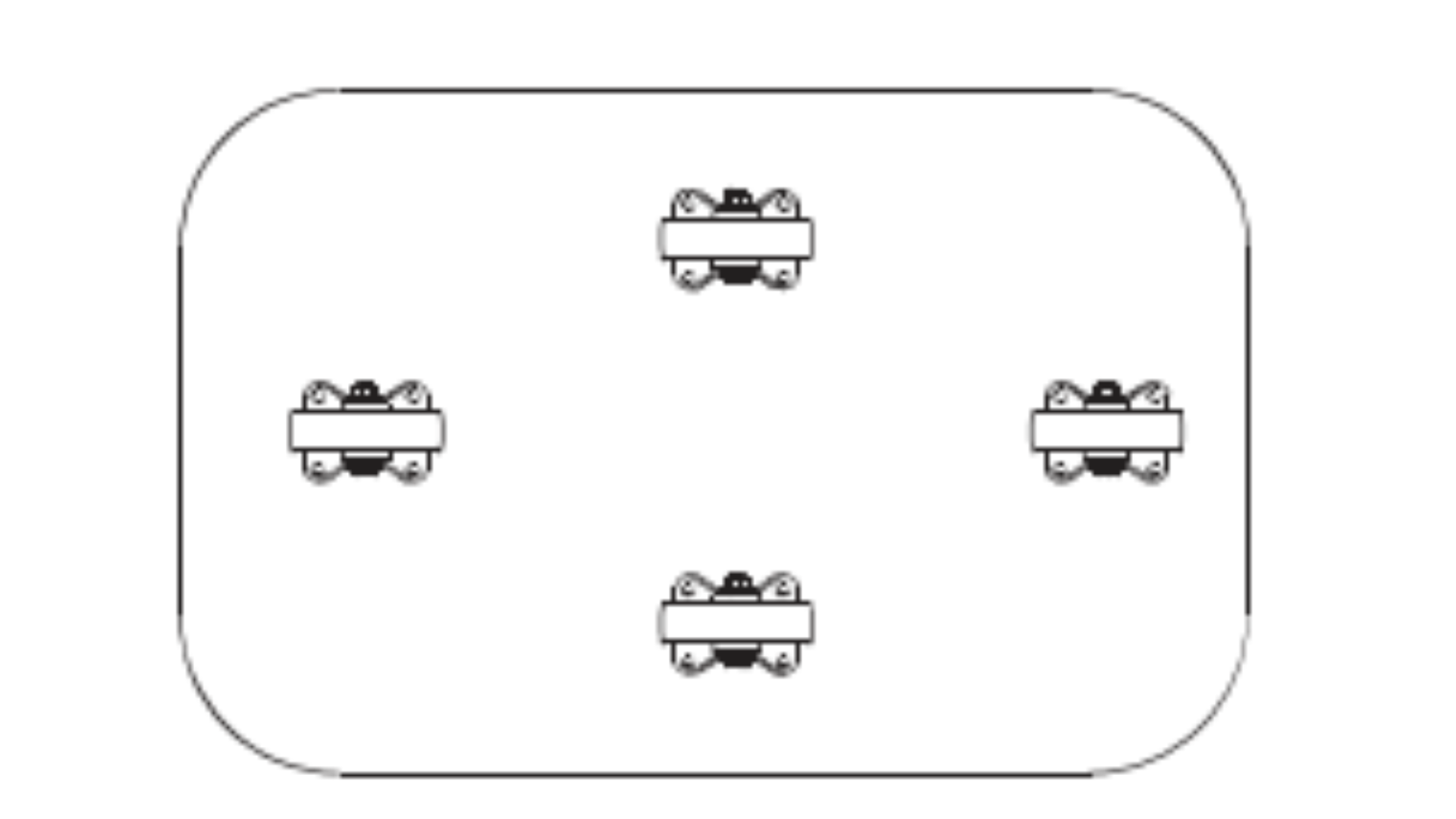 |
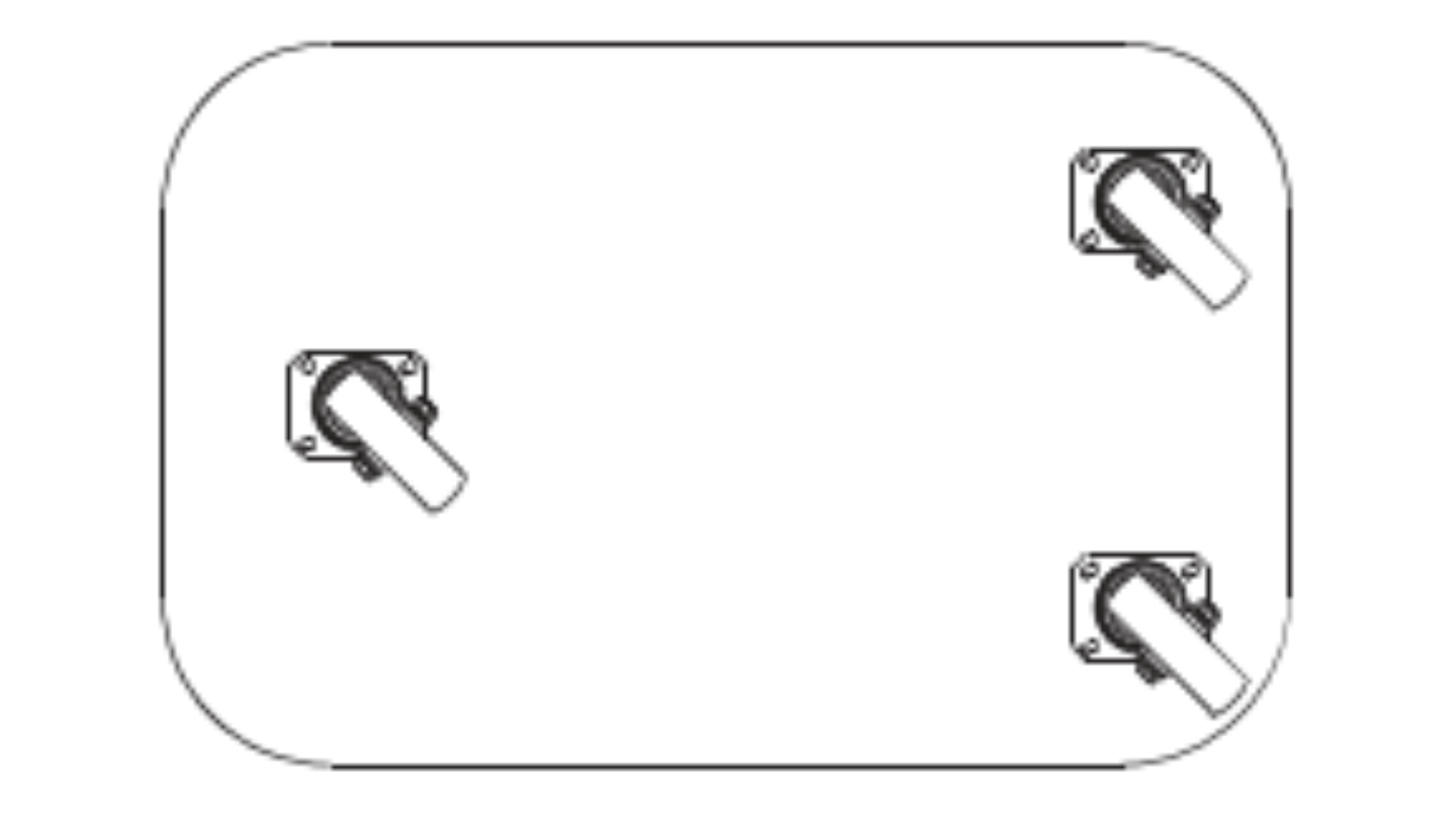 |
| For precise use in narrow spaces. | The fixed castors in the middle should be slightly larger than the rest. For use at long, straight distances. | For flexible treatment on routes with hardly any straights. Only with a stable and low load. |
A brief explanation of the above recommendations: for long, straight distances, it is best to choose 4 fixed castors. This gives the most stability while rolling, but does not allow for turning or cornering. In practice, this arrangement is not often chosen. If you often have to turn or manoeuvre short, such as in supermarkets or narrow warehouse aisles, we recommend four swivel castors. With four swivel wheels, you have a small turning radius and you can move sideways faster and easier. Every other setup includes a combination of casters and fixed castors. This provides a combination of manoeuvrability and stability.
A closer look: castors
In the home environment, casters are a frequently used solution for moving large and heavy pieces of furniture with ease. In the workplace or in warehouses, these wheels are mainly used under dollies, roll containers, transport trolleys, flatbed trailers or Danish trolleys. A logical question that is often asked is: where do you place these castors? In all cases, (swivel) wheels are best placed in the corners of the ground. This guarantees the most stability and spreads the weight of the load the most.
Another question that often comes up on this topic: how to attach casters? The answer to this consists of 3 different possibilities. The design of the wheel determines the method of attachment. The 3 possibilities are elaborated below.

Wheels with a rectangular base plate and mounting holes
With this type of castor, the base plate is attached to the bottom of the respective product using 4 screws. At Rotomshop UK we only sell this type of castor. Depending on the diameter and type of castor, the dimensions of the base plate will differ. It is important to check the dimensions of the base plate carefully so that the wheels fit on your bottom. Our range of castors includes three different types of base plates:
- Base plate 105x80mm
100mm, 108mm & 125mm Ø
- Base plate 135x110mm
100mm, 125mm, 150mm, 160mm, 200mm & 250mm Ø
- Base plate 105x86mm
65mm, 80mm, 100mm, 125mm Ø
Good to know: there are swivel castors with and without brakes. The base plate for castors with brakes is generally the same size as the base plate for castors without brakes. In the Rotomshop range, there are options of swivel castors with a base plate, and with or without brakes.
Wheels with only a bolt hole have only one attachment point. In this attachment point, the screw is screwed, which will also be in the bottom of the roll container. It is therefore important to use sturdy screws!
Wheels with a pin (threaded or unthreaded). These are supplied with a built-in plug that can be placed in a bolt-hole. You then mount the pin in the plug and then in 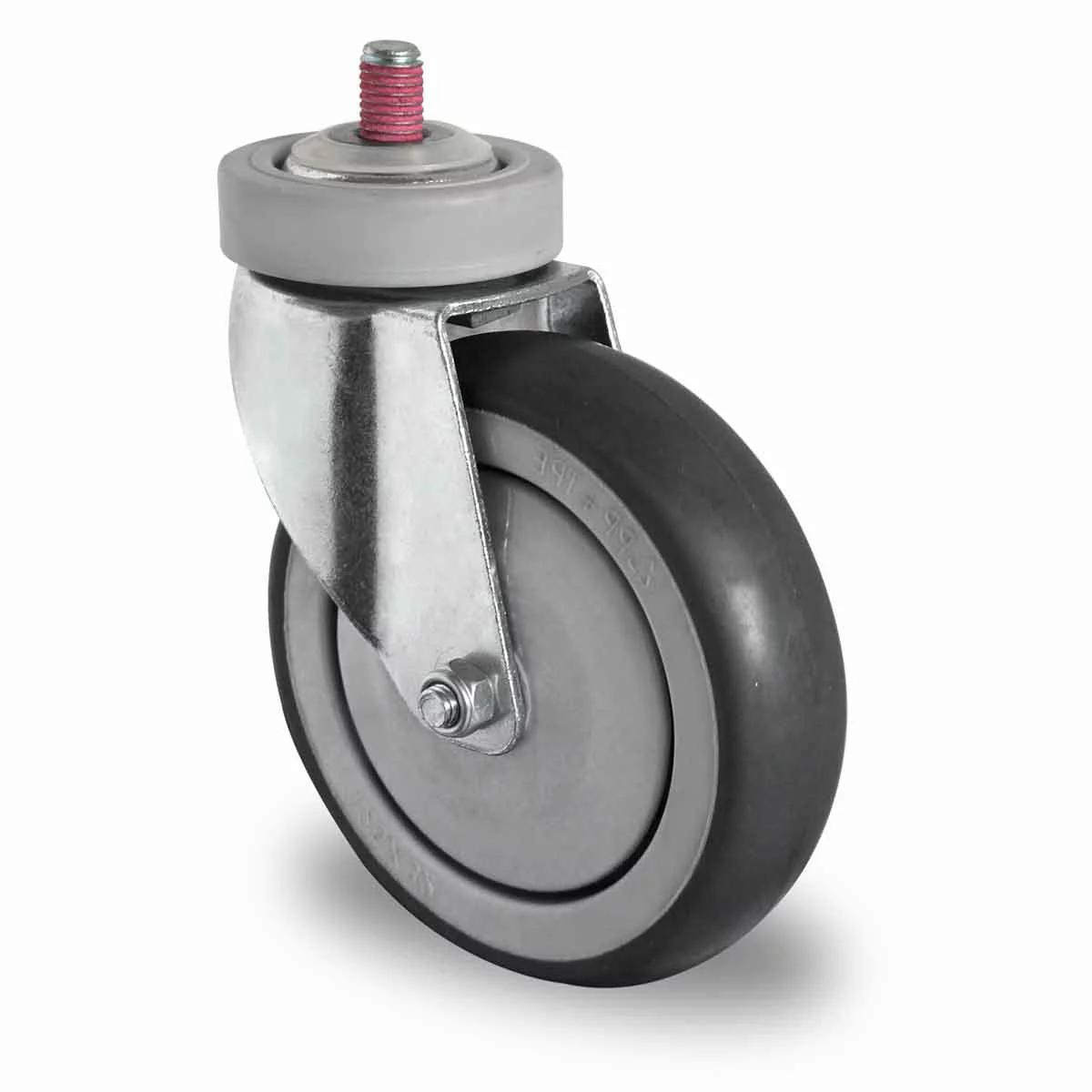 the bottom of your trolley. This type of castor is often used for load carriers with low load capacities. This is because this type of casters also has a low load capacity.
the bottom of your trolley. This type of castor is often used for load carriers with low load capacities. This is because this type of casters also has a low load capacity.
Important details
Finally, the following things may be less obvious, but that certainly does not make them any less important. When castors are attached to wood, it is best to choose lag bolts or carriage bolts. This applies to both a base plate and a single-hole central fixing. For mounting on steel, the best carriage bolts, hex bolts or Allen head screws can be used. Another part of (swivel) wheels is the bearing type of the wheel. Classic plain bearings are suitable for both dry and wet conditions. However, these require more pushing force than any other type of bearing. Plain bearings are often used in lighter applications or in applications where the movement does not need to be as smooth. Roller bearings and ball bearings both offer lower friction, allowing the wheels to rotate smoothly and efficiently. These types of bearings are the best choice when low rolling resistance is desired, for example with frequent use. The disadvantages of roller bearings and ball bearings are that they are often more expensive than ball bearings. In addition, they don't perform as well in humid conditions.
Conclusion
With the information from this blog, you can find out what the optimal arrangement of the wheels under your roll cages is, which type of wheels you use best (swivel wheels or fixed castors), which base plate fits on your roller floor and which type of bearings are ideal for the circumstances. Would you like to combine wheels and roll containers from our range? No problem, you can contact us about this. If you would like to know more about roll containers and transport wheels, please do not hesitate to contact us. Rotmshop UK is a specialist in load carriers. Contact us today at [email protected] or call us on +44 (0)1777 322100.
